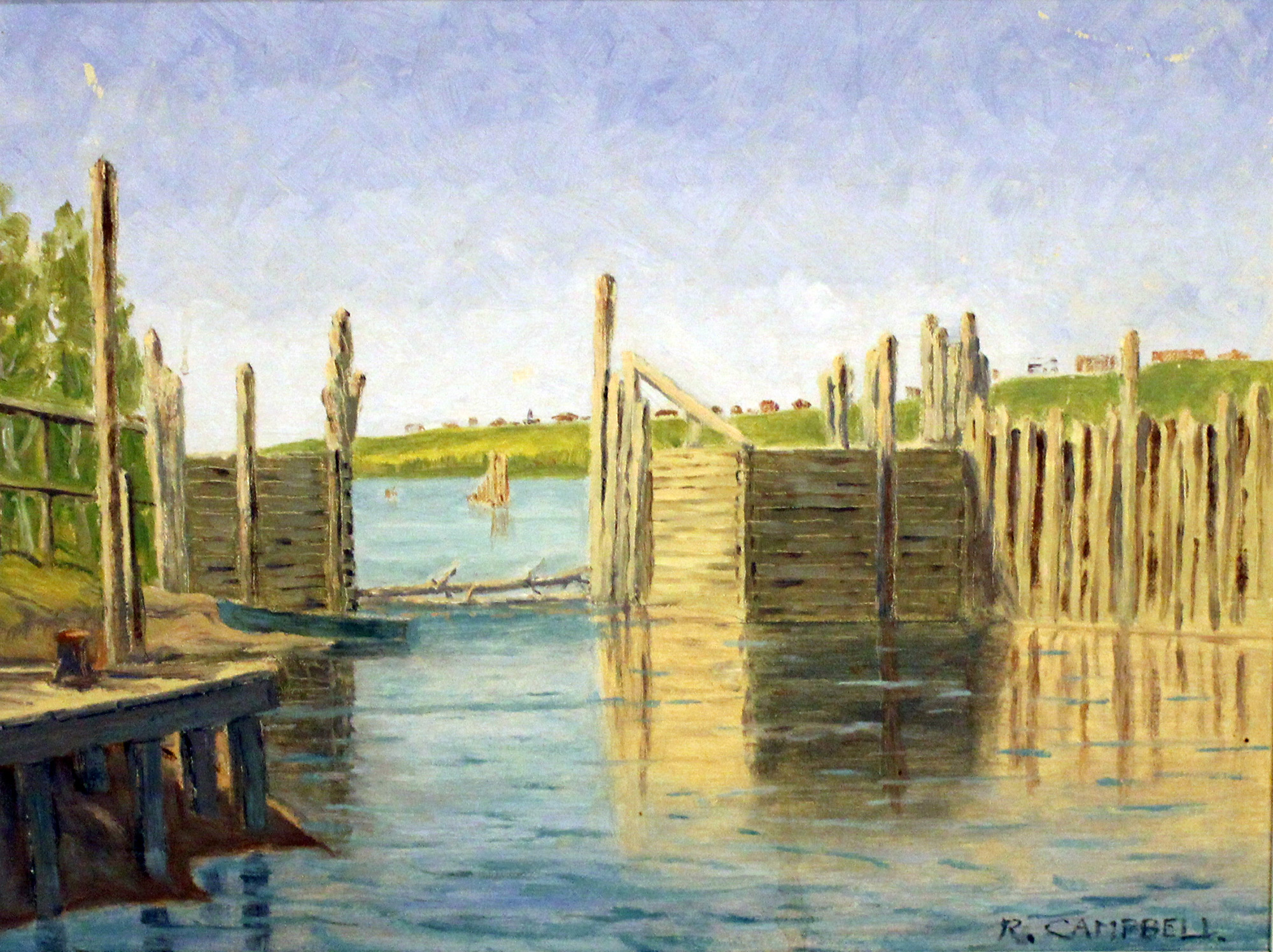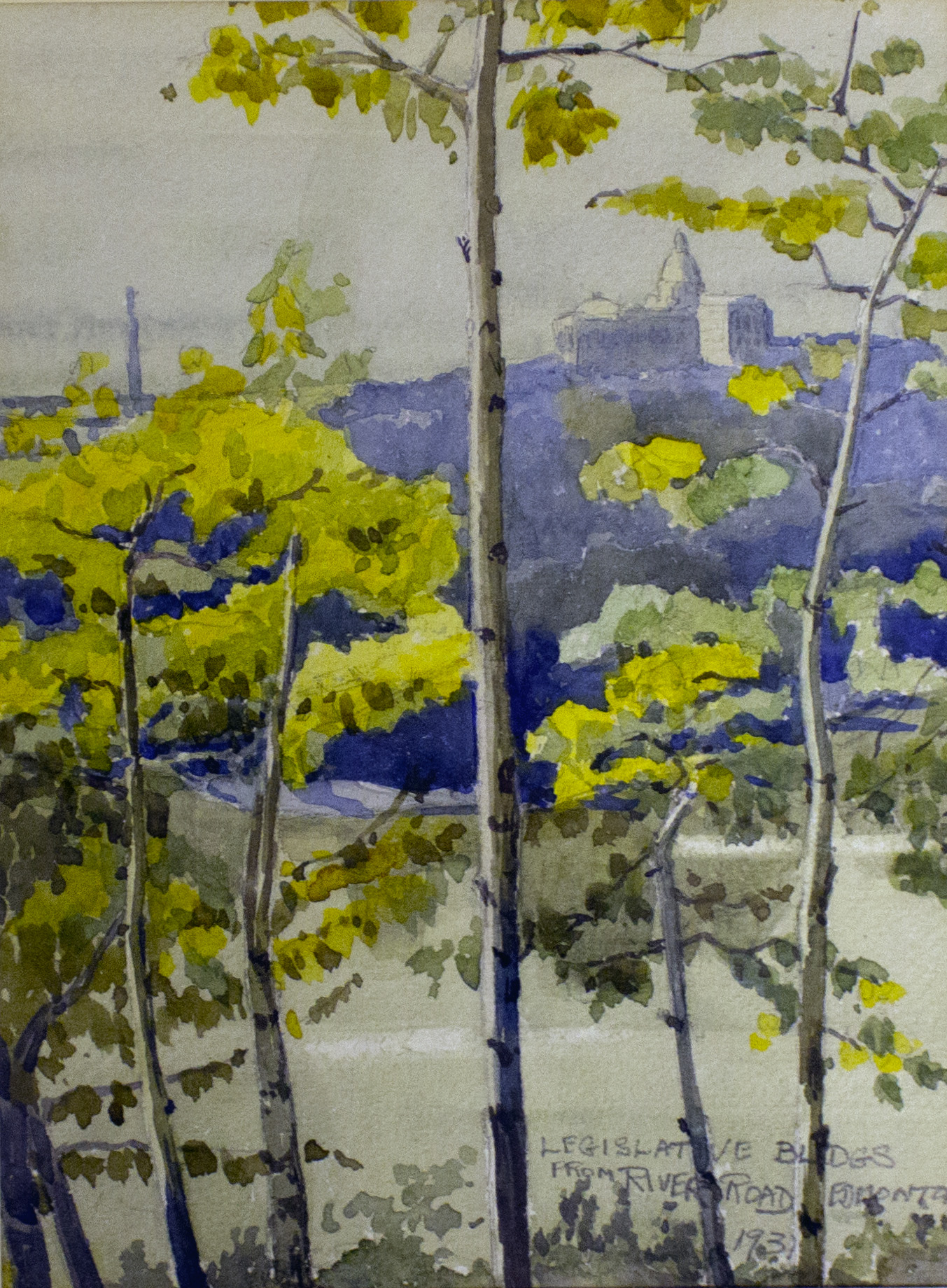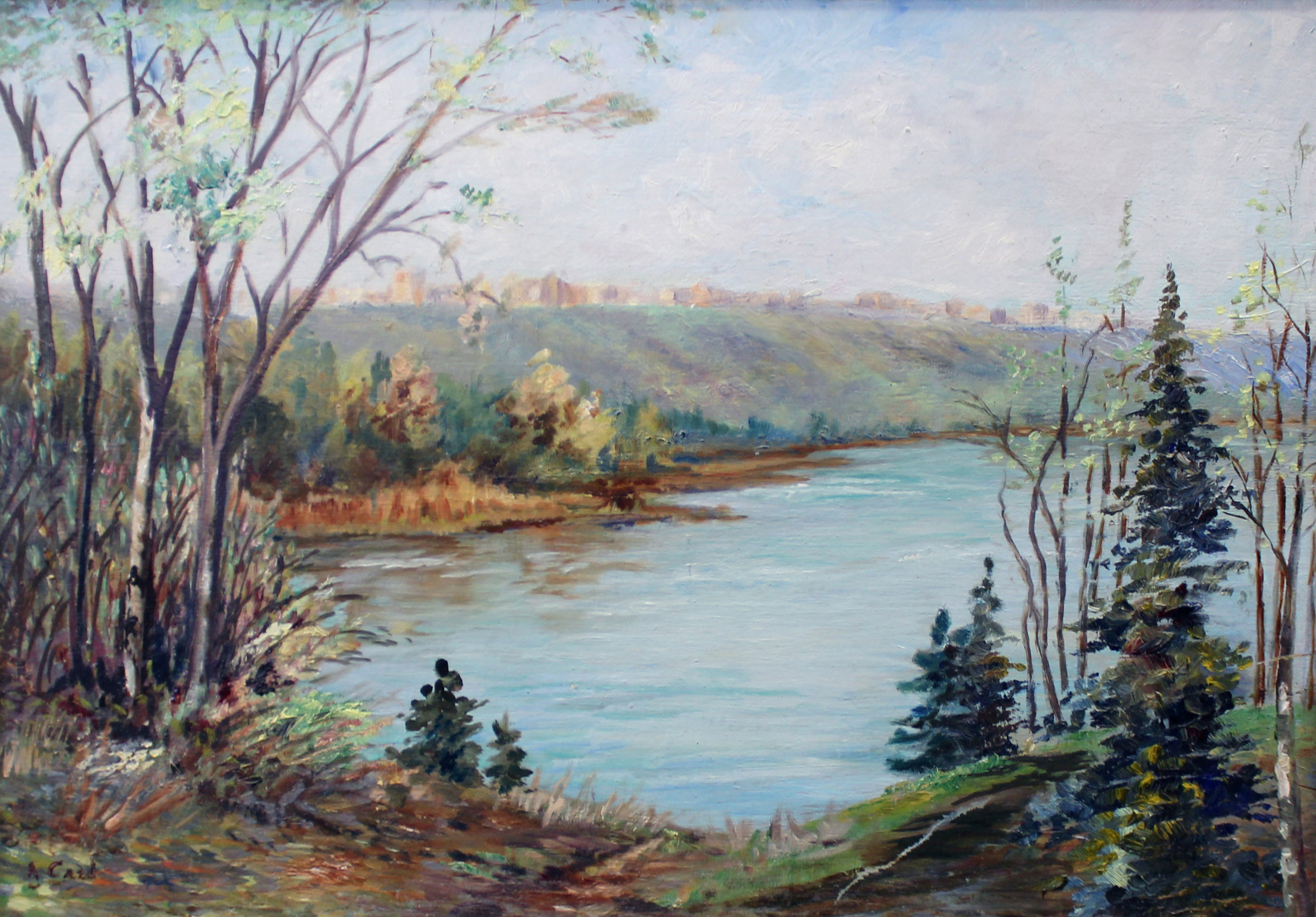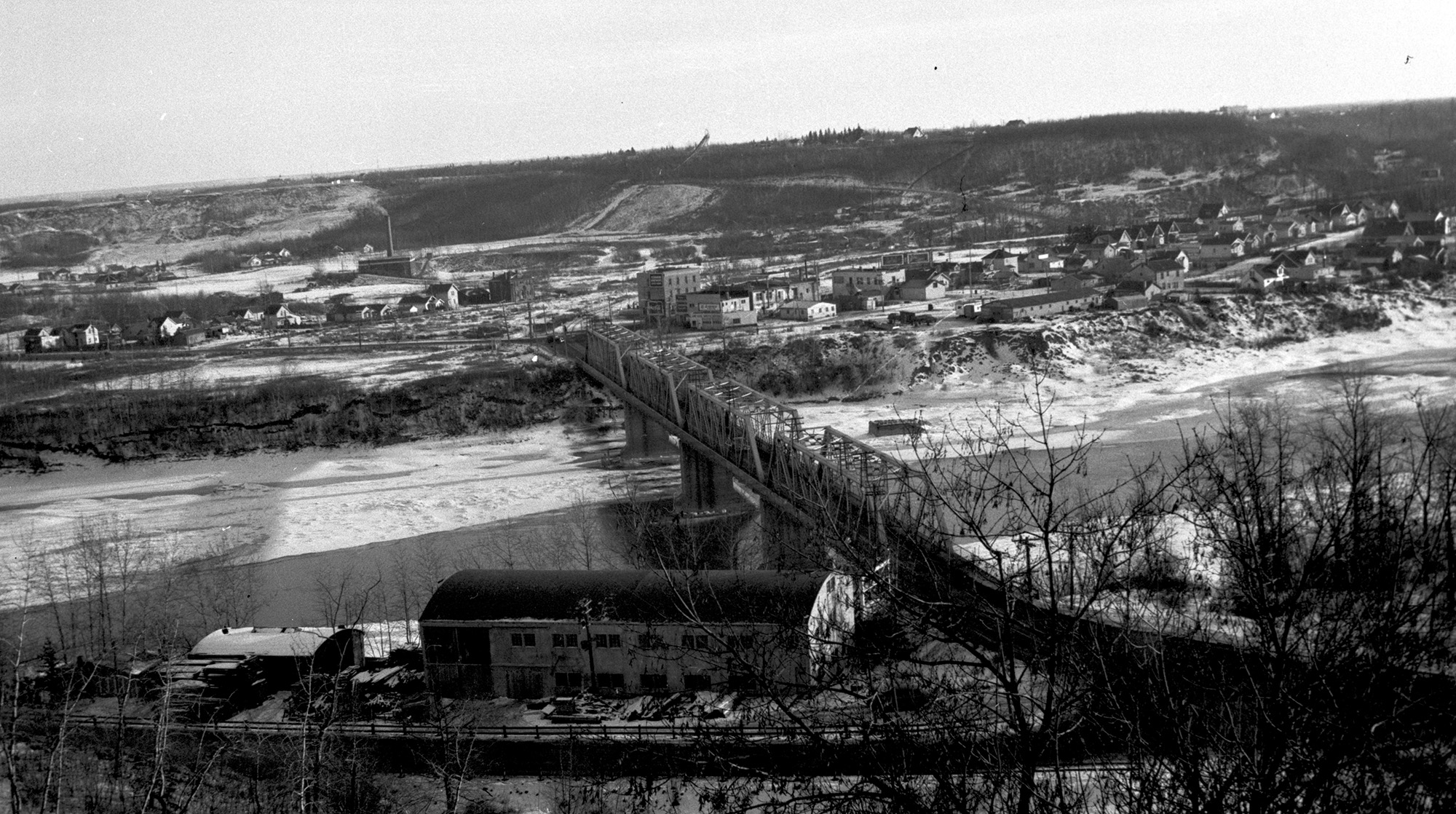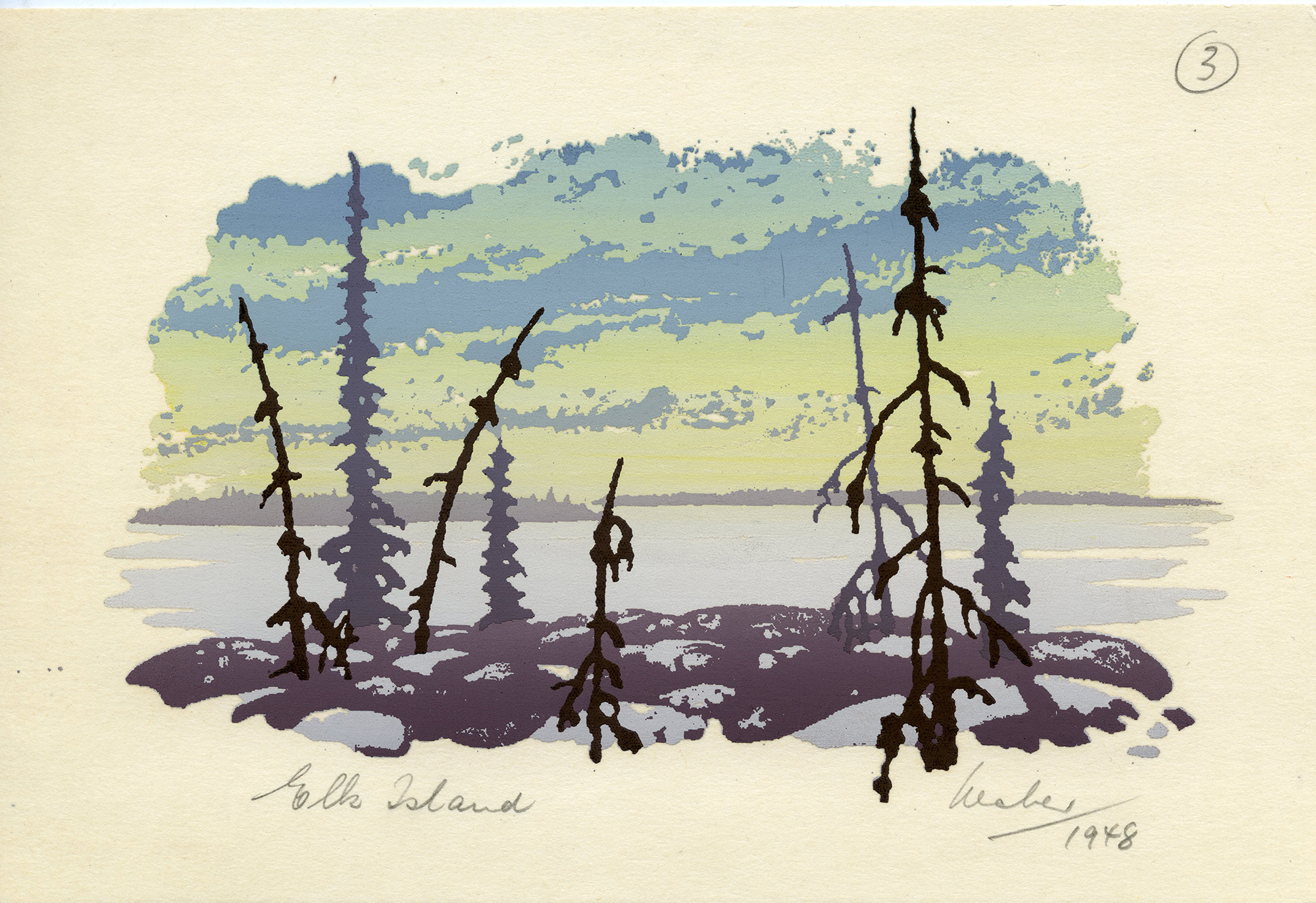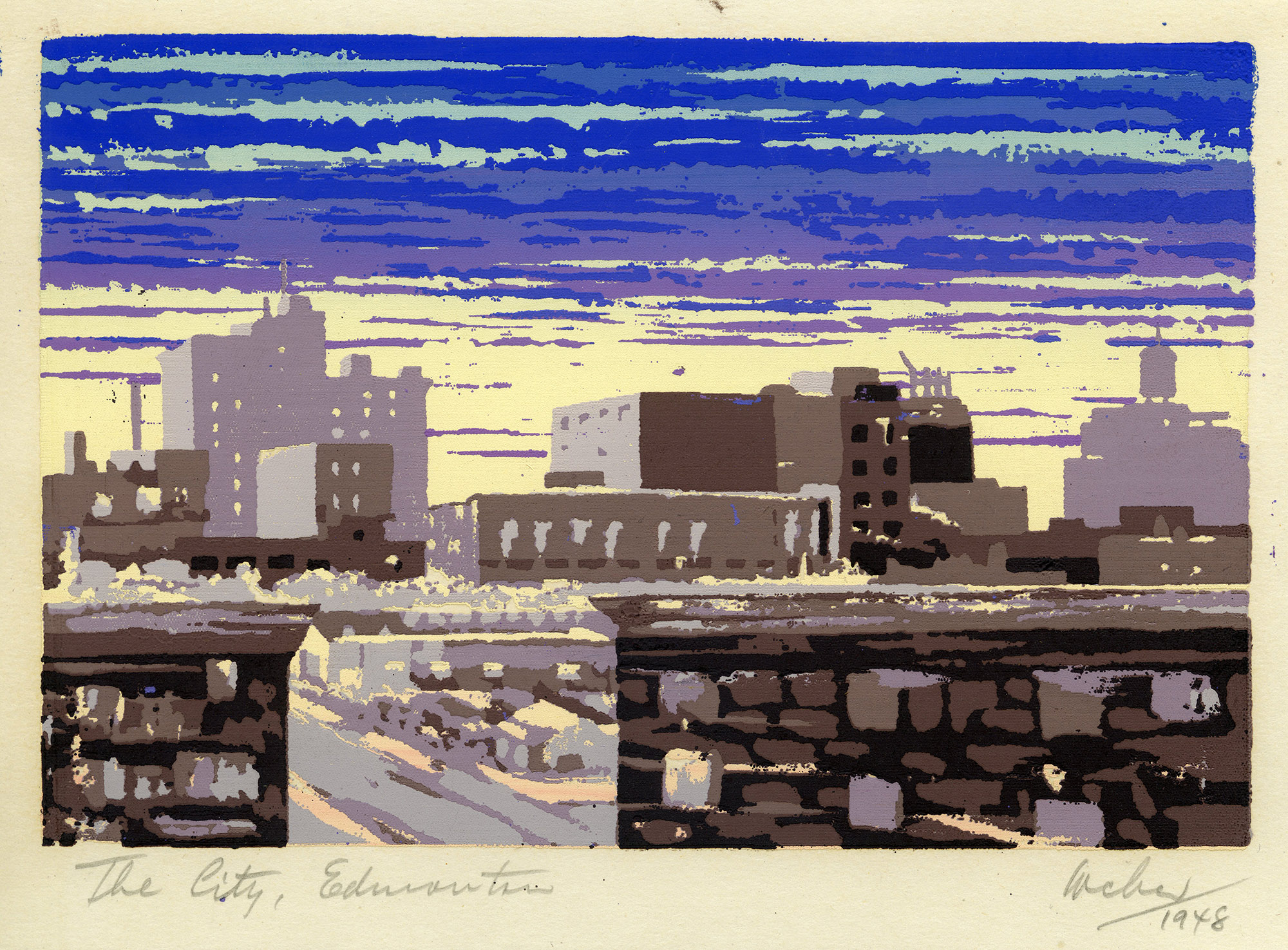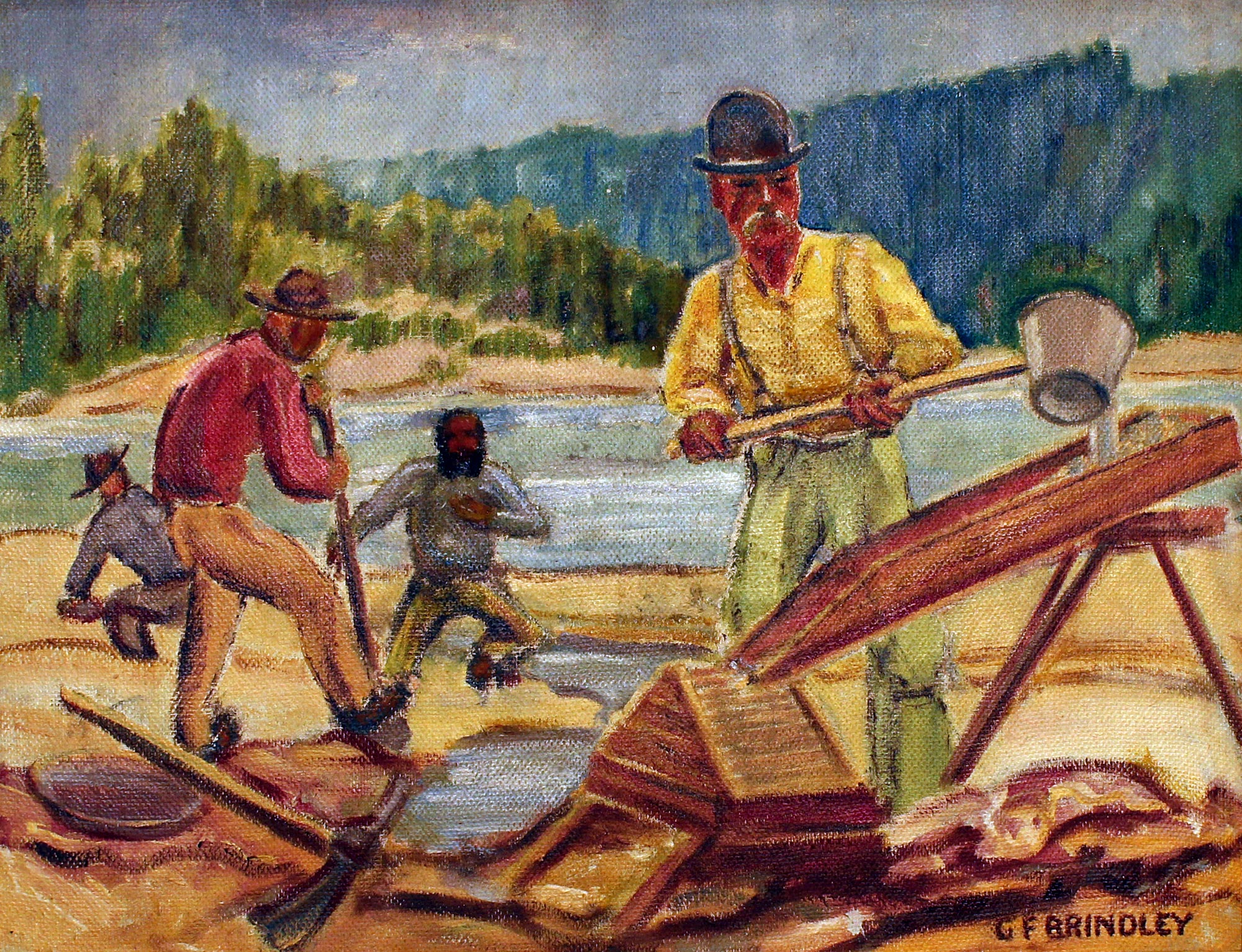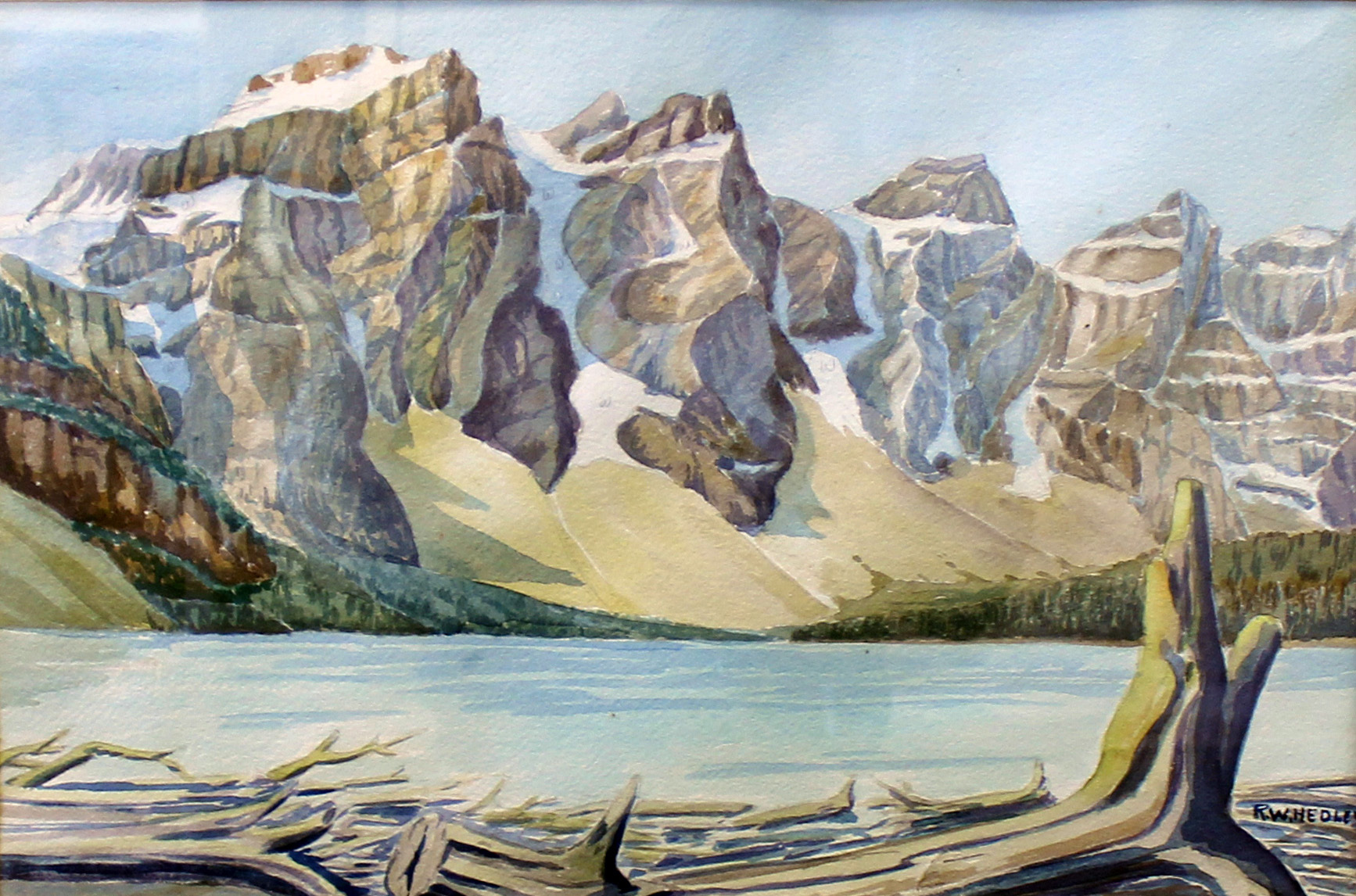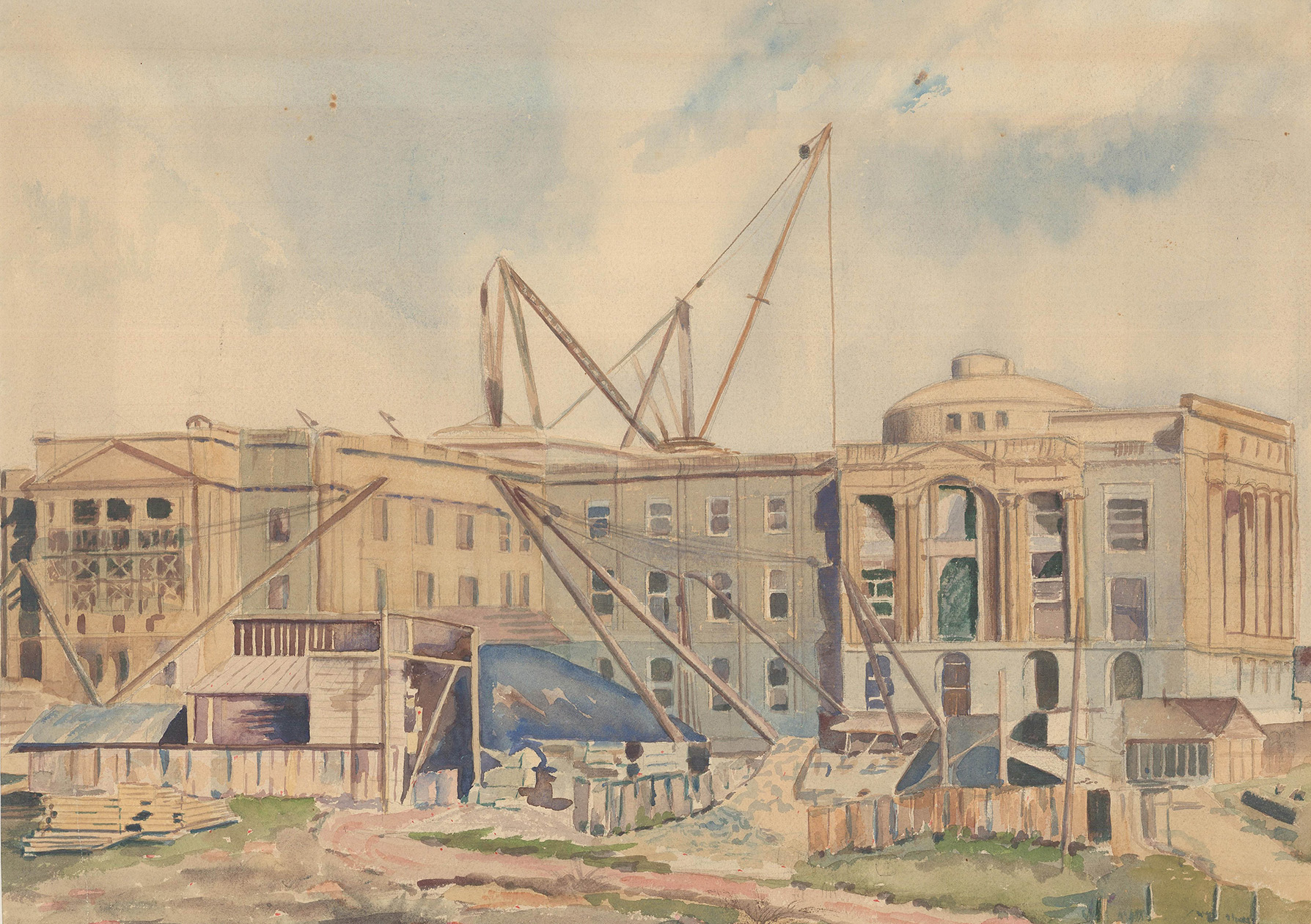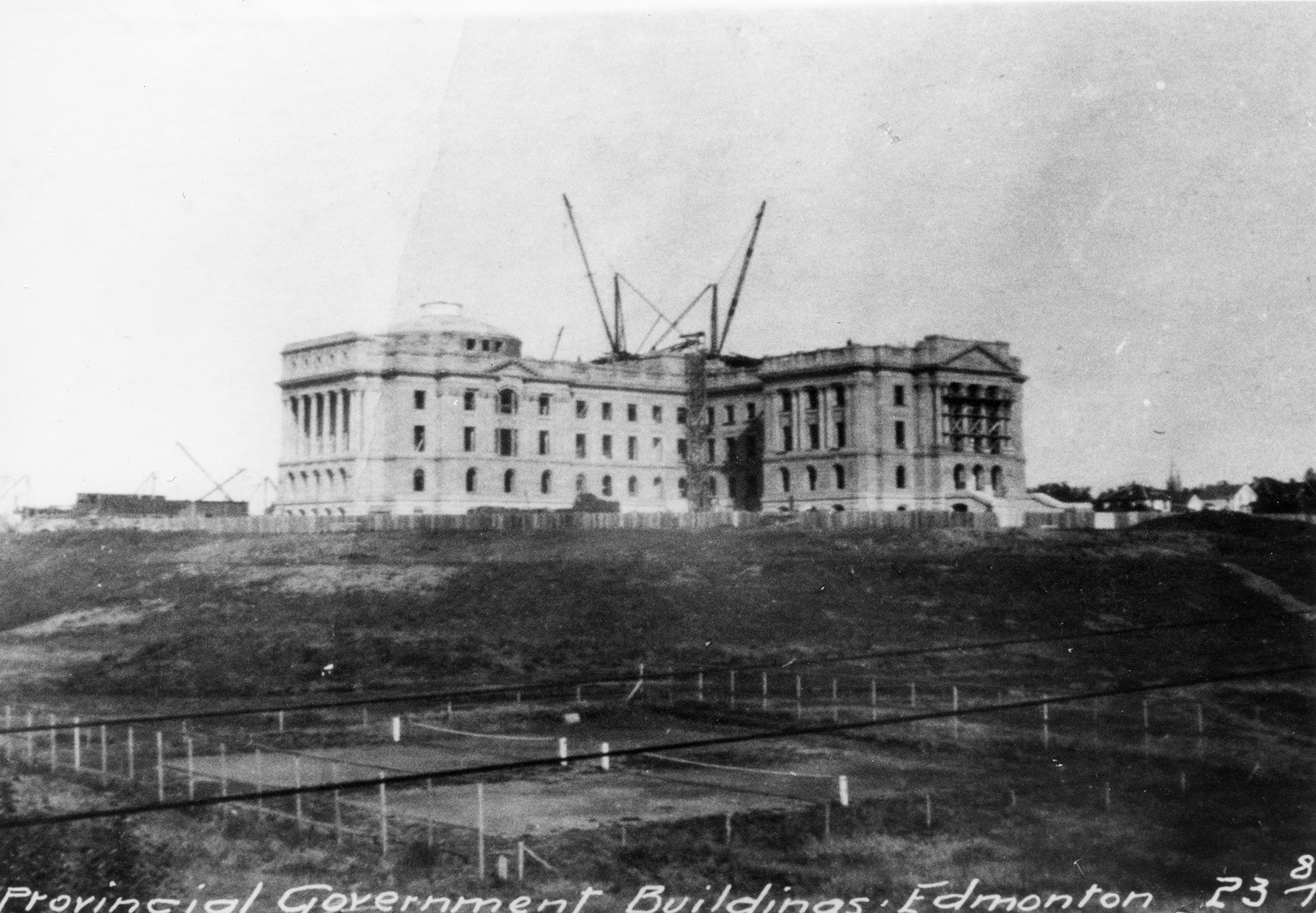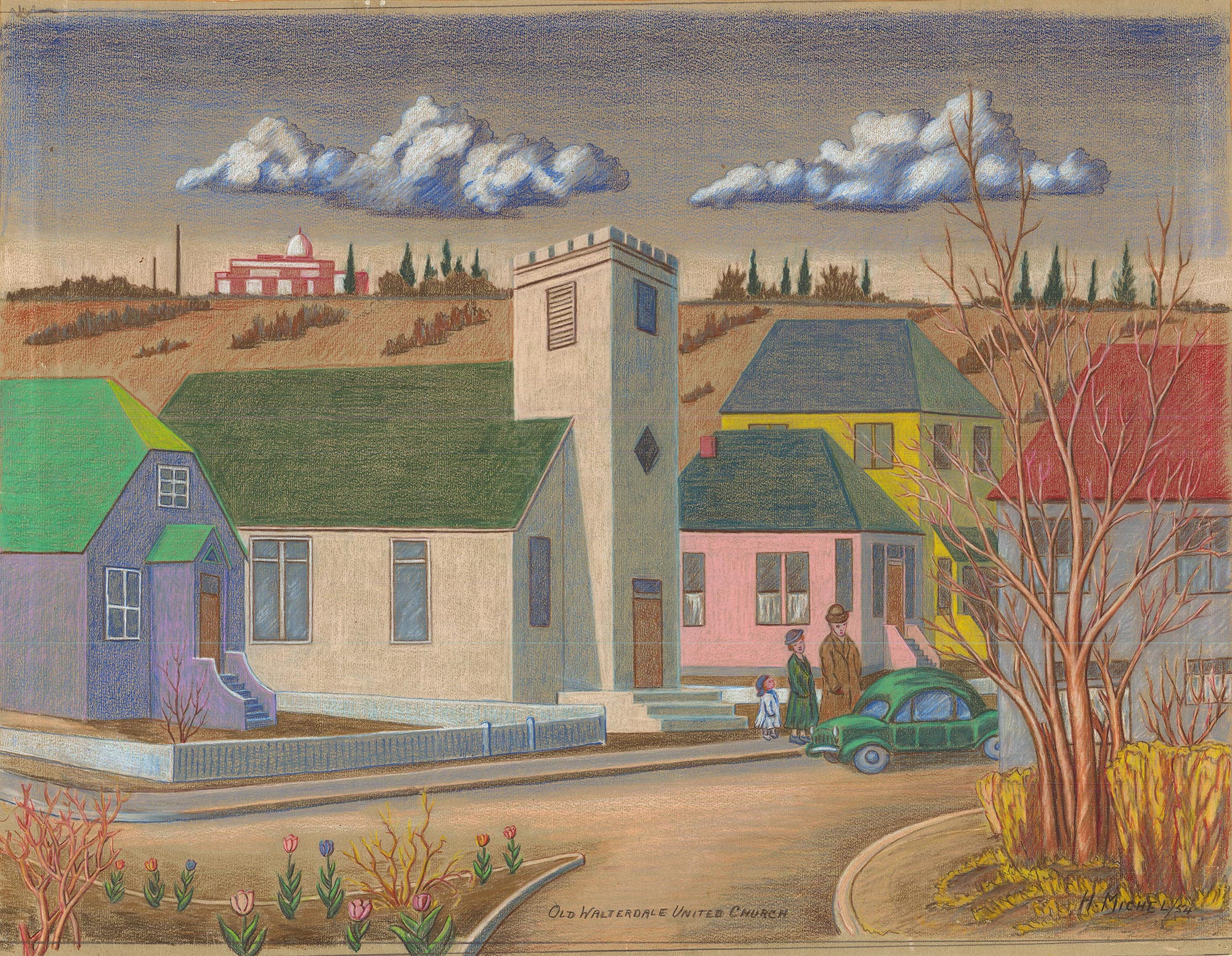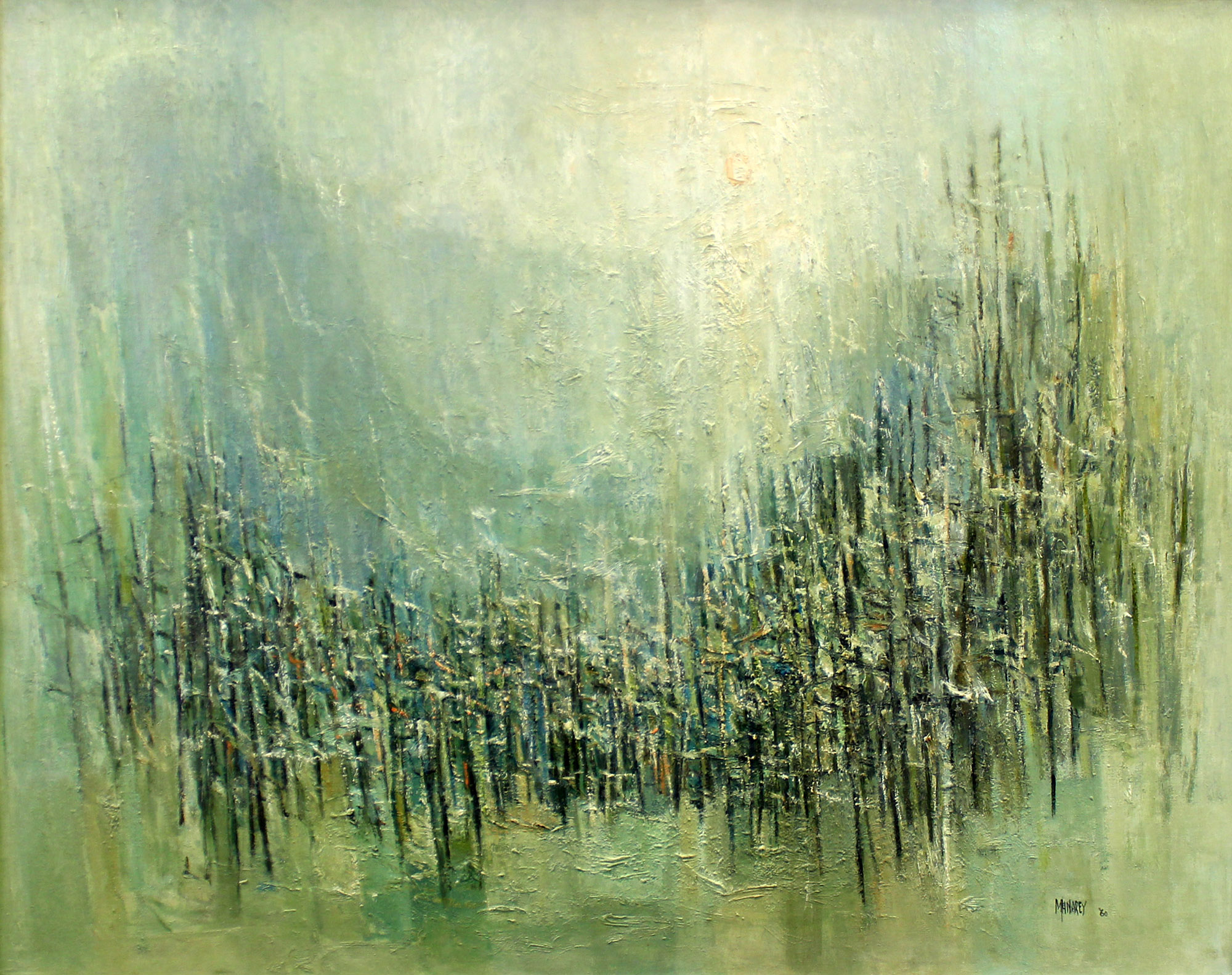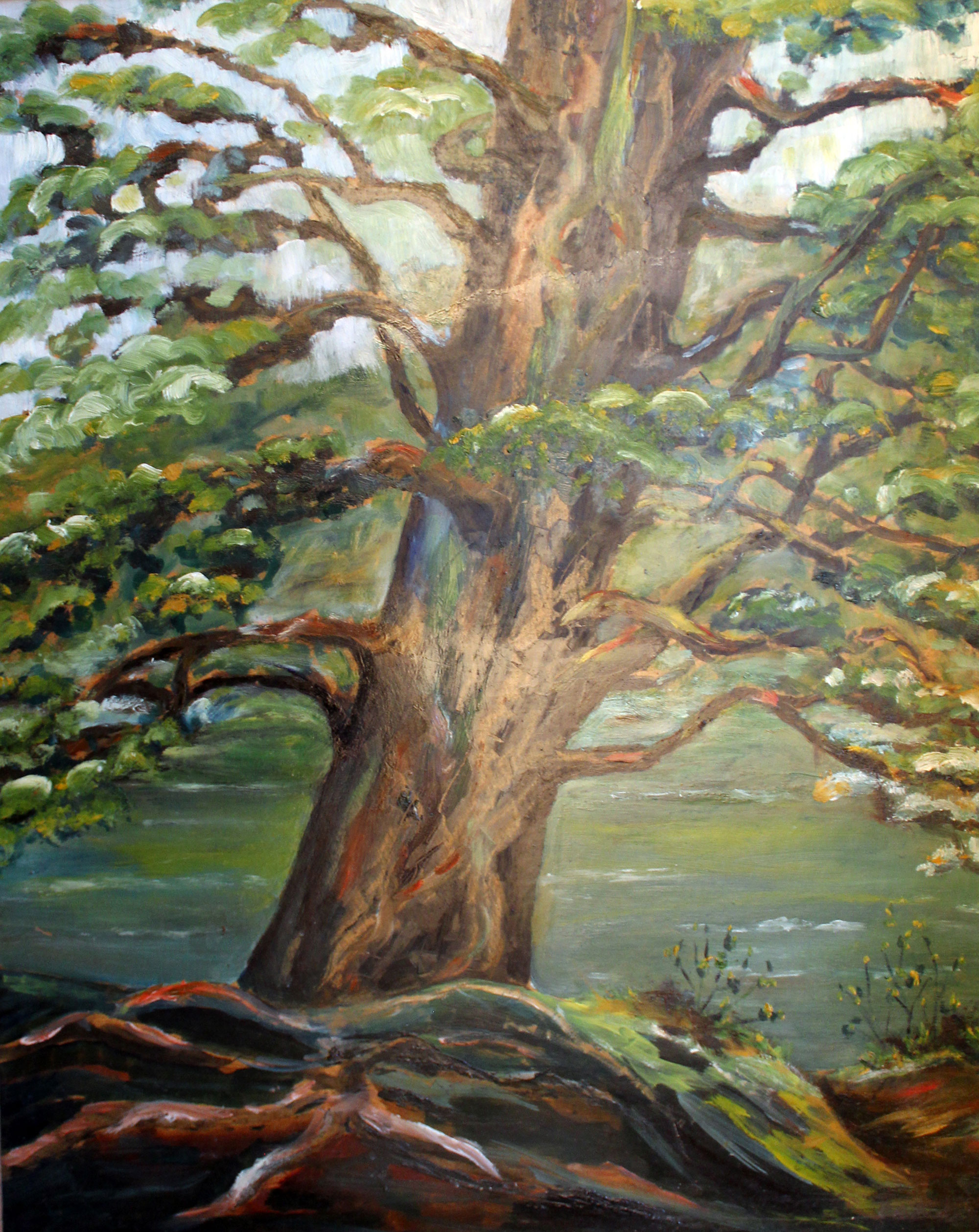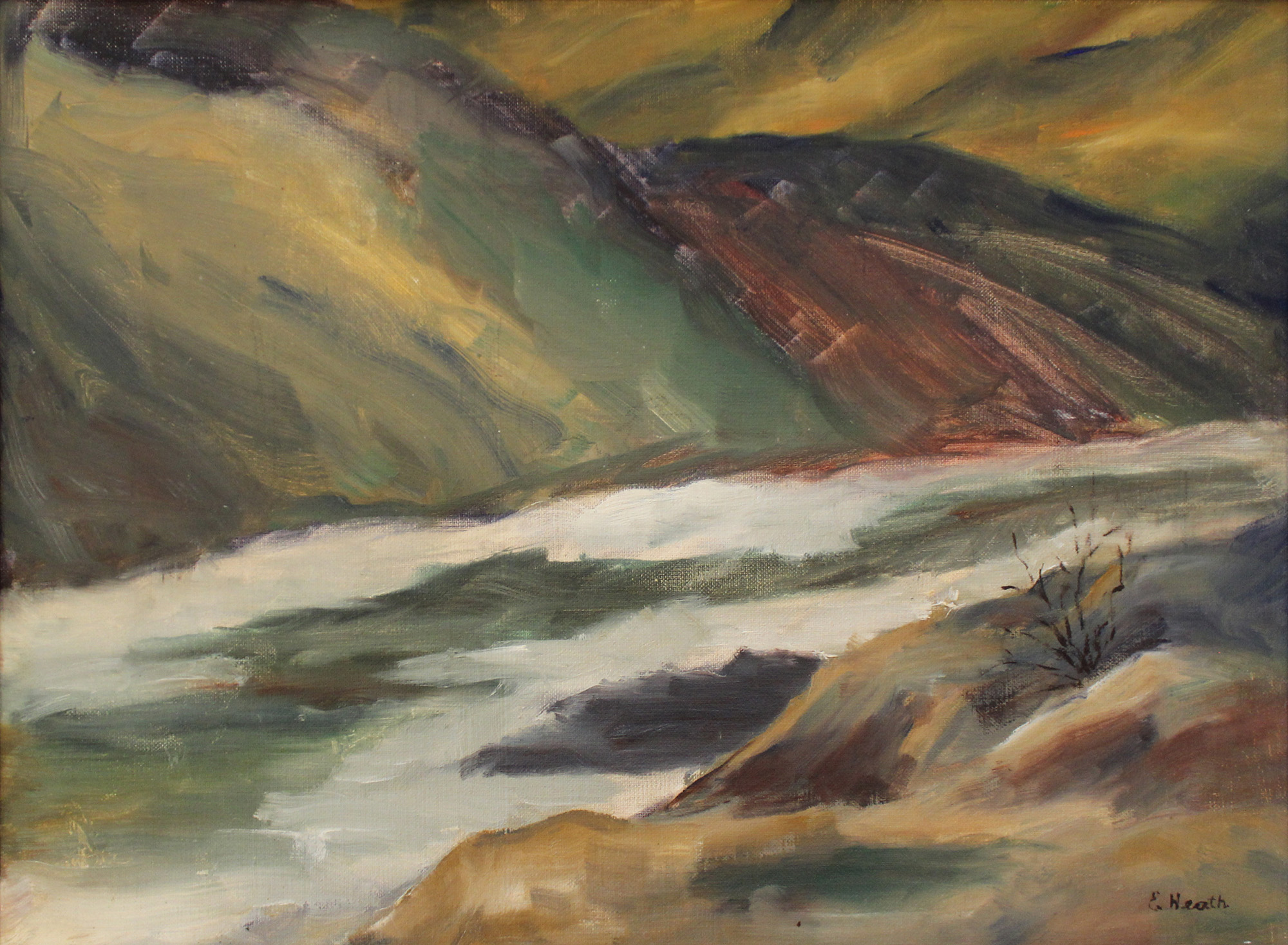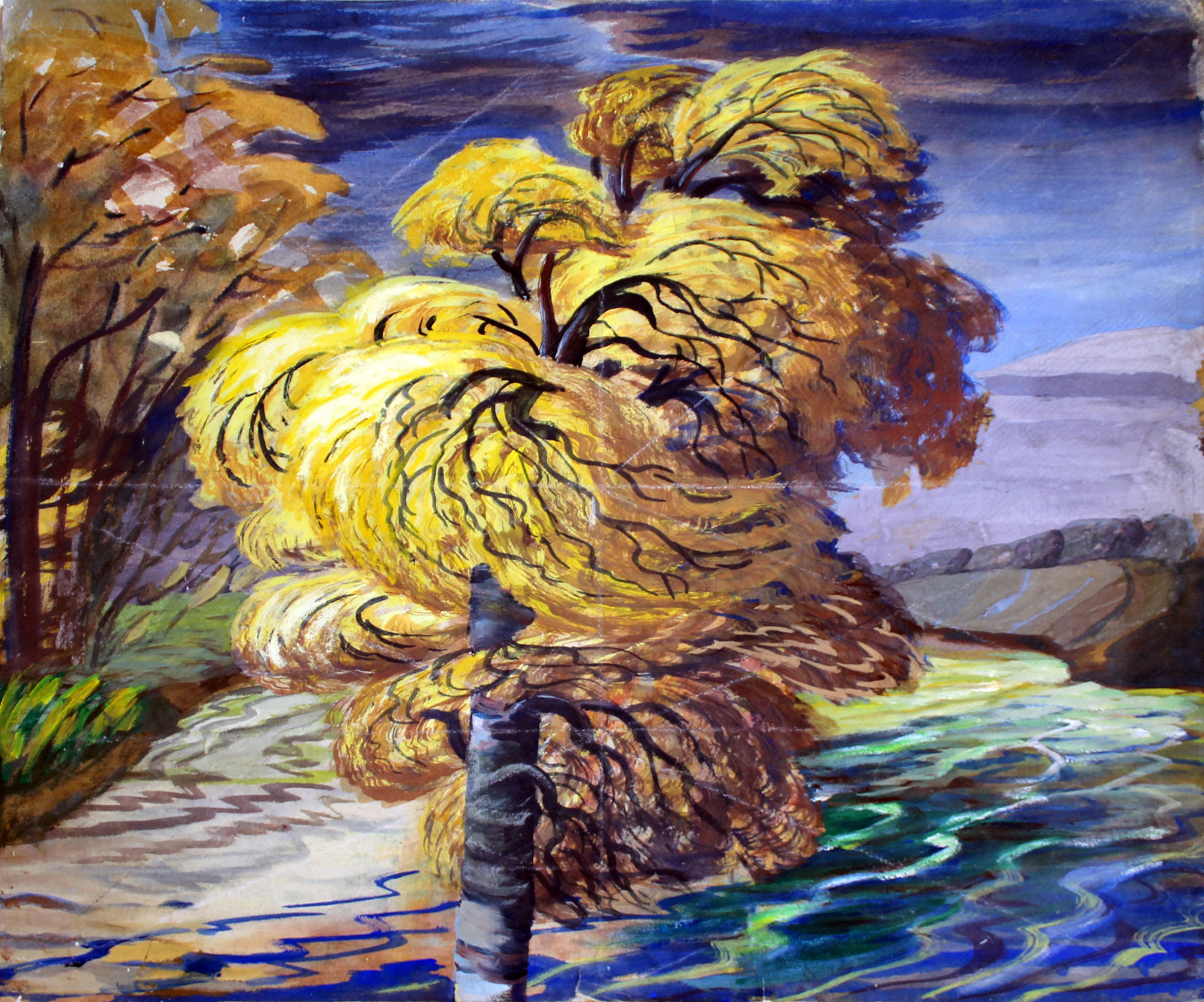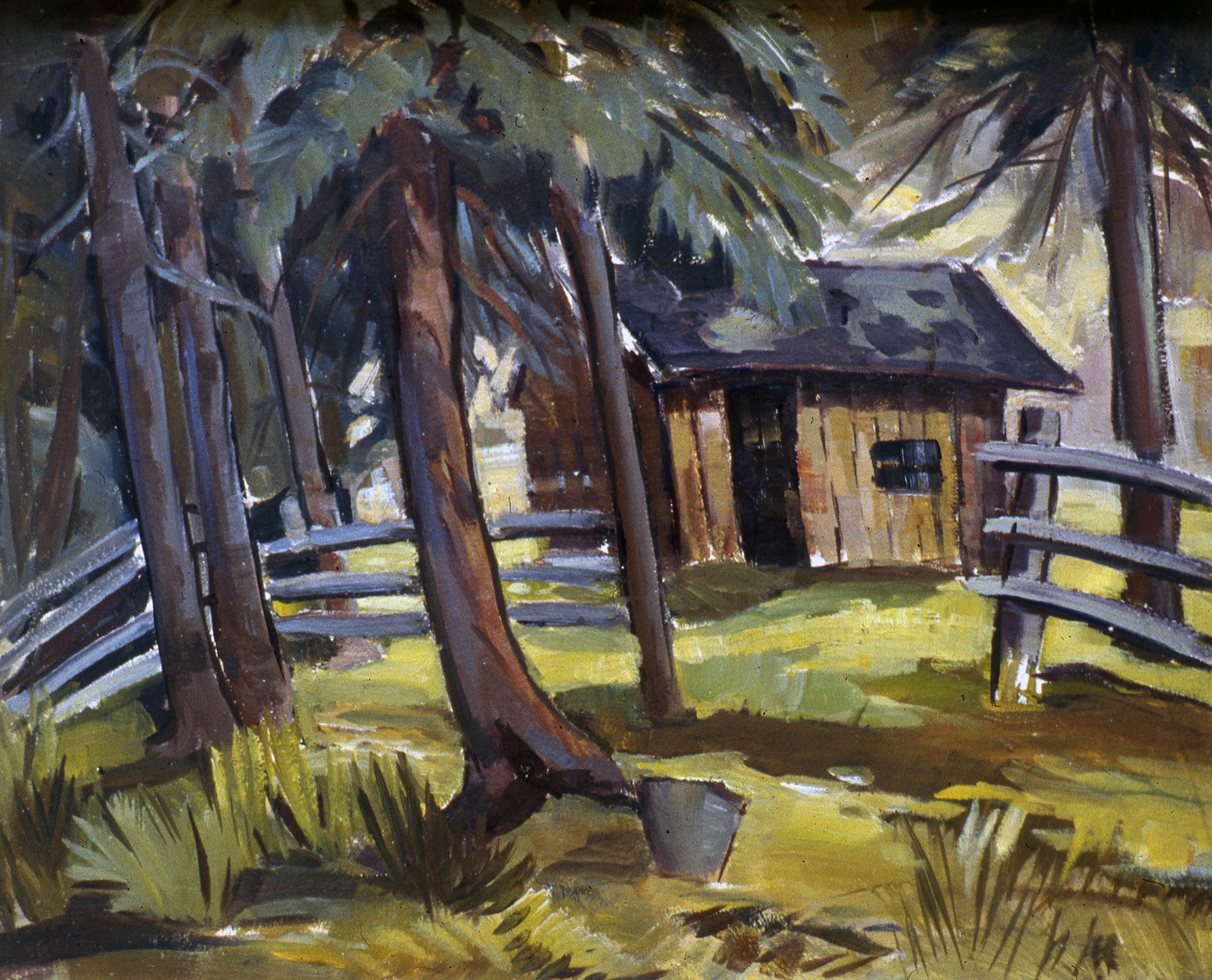In 1953, the City of Edmonton Archives and Landmarks Committee received one of its first artwork donations from the daughter of Emily Murphy. Throughout the years the Archives has continued to accept the works of Edmonton artists. Through the exhibit, On Canvas: Art at the City of Edmonton Archives, you can explore pieces created by visual artists and their depictions and expressions of Edmonton through art from the Archives. Art allows us to engage with stories and perspectives from the past in ways other records may not. This exhibit does not aim to fully encompass the vast amount of artwork created in Edmonton, but to provide a representation through a selection of pieces of the city’s historically vibrant art scene for both professional and amateur artists.
Delve into the exhibit starting with one of the Archives' earliest donated pieces, Edmonton Hotel and Saskatchewan Valley by E.R. James. As you move your way through the exhibit you will encounter various mediums, distinctive styles and creative representations of the city’s nature, buildings, people, and landscapes. Enjoy viewing Edmonton’s past through the perspective of some of its artists and their works.
Among the first items ever donated to the predecessor of the City of Edmonton Archives, the Landmarks and Archives Committee, was this painting by E. R. James. It was owned by Edmonton author, police magistrate and member of the “Famous Five” Emily Murphy. After her death, the painting was given to her daughter Evelyn Murphy, who donated it to the City of Edmonton.
The painting documents the Edmonton river valley, the view showing buildings nestled in the valley’s natural landscape, with minimal development on the opposite bank. As the city developed these views of the river valley changed dramatically, but the appeal of painting the river continues.
The Mooring Dock for the River Steamboat "City of Edmonton" at Walterdale in 1919
by Robert Campbell, ca. 1919; Donated in 1984
Robert Campbell moved to Canada in 1906, and started painting in 1916. He moved to Edmonton after the First World War and worked as a dental technician while pursuing his artistic endeavours. Campbell was a member of the Edmonton Art Club and the Artists Society of Alberta, as well as being a founding member of the Banff School of Fine Arts.
In the early 1900s John Walter built two steamboats, one named the City of Edmonton. His steamboats hauled freight and transported passengers along the North Saskatchewan River. The City of Edmonton was the larger boat and had enough room for a band and a dance floor. In 1911 John Walter would convert his larger steamboat to do holiday excursions to Big Island, starting the Golden Age of Picnicing on the North Saskatchewan River. After 1918 the steamboat was no longer in use.
Hilda Vincent Foster moved to Edmonton with her family in 1927. She was considered a newcomer of promise by the Edmonton Journal and joined the Edmonton Art Club in 1930 to be immediately elected its president from 1930-1934. Hilda and her life partner Edith moved to Cobble Hill, British Columbia around 1942.
Foster gave six watercolour paintings to the Edmonton Archives in 1963. This creative image shows two of the most popular visuals of Edmonton - the North Saskatchewan River and the Legislature buildings. In the foreground are birch trees, a common tree in the Edmonton area.
Joseph van der Gracht joined the Edmonton Art Club in 1929 and moved to Vancouver in 1933. This painting was included in the 1933 Edmonton Art Club exhibition, after which it was given to fellow Art Club member Robert Campbell and his wife. It’s unclear how the painting went from the Campbell’s to the Secord family, who donated it to the archives.
The oil painting shows the North Saskatchewan River during the spring season. While a common subject for many Edmonton artists, the ground level view of the river with a focus on the trees provides an interesting perspective.
Kathleen Kaufman was born in 1913. She joined the Edmonton Art Club in 1934 and participated in exhibitions until 1953. She also served as treasurer of the Edmonton Art Club. She moved to the Toronto area in 1959, where she continued her active involvement in the Ontario arts scene.
Although no information is known about the inspiration behind this pastel drawing, it appears very similar to many Edmonton river valley scenes and could be a view from Queen Elizabeth Park. Trails were carved through the deep snow to allow for people to visit the parks year round and enjoy the natural beauty of Edmonton in the winter.
Edmonton River Valley
by Annie Card, 194-?; Donated in 2000
Annie Card moved to Innisfail with her husband Rev. Gerald Card in 1904. They lost everything to a prairie fire in 1906, after which they moved to Vegreville, then to Fort Simpson in the Northwest Territories. After her husband died in 1932, Card moved back south to Edmonton and focused on her artwork. She joined the Edmonton Art Club in 1933 and painted in watercolour and oils.
This painting is another classic example of the Edmonton River Valley, although the slightly less common view of the south bank. When the Archives was processing and describing this work, we discovered that a still life was painted on the back. Artists commonly reuse supplies to save on costs, and it was a pleasant surprise to see such resourcefulness in the Edmonton art scene.
The Old Boat House near the Low Level Bridge
by G. J. Hunter, between 1943 and 1952; Purchased in 1952
An early addition to the collection from the Archives and Landmarks Committee, this painting was purchased for $15 in 1952. The purchasing of items for the Archives was an active policy for many years, but with changing attitudes and budget focuses, the policy was discontinued. Sadly, little information was captured about the artist of this painting.
The Old Boat House is a painting of the ruins of the Alberta Motor Boat Co. located on the north end of the low level bridge, established in 1912. The company built boats that were used on lakes and rivers around Alberta, in the north, in British Columbia and on the Great Lakes. They also made other implements of travel, such as dog sleighs and skis planes. The main structure burned down in December 1946. The archives has many photographs of the fire, but only a few of the building. The photo below from the 1940s shows the main building in the bottom centre, with a smaller auxiliary building to the left.
George Weber was born in Munich, Germany in 1907. As a draftsman, he trained in wallpaper design and display. He immigrated to Canada in 1929 and first settled in Toronto. He worked as a wallpaper designer and studied composition, colour and commercial silkscreen at the Ontario College of Art. He moved west during the Depression, working on farms before moving to Edmonton, where he worked as a commercial printer for the Hamly Press and Reliable Printing. Weber lectured on the silkscreen process (serigraphy) at the University of Alberta in 1948 and in the early 1950s led workshops at the Edmonton Art Gallery.
He was a founder of the Edmonton branch of the Canadian Painters and Etchers and served as president of the Federation of Canadian Artists. Weber was one of the first Canadian artists to use silk-screening techniques as a fine art form. His silkscreen prints and watercolours became increasingly popular in the 1970s and 1980s.
These works were submitted to the City of Edmonton by Weber as examples of postcards which could be sold by the City as a means of generating revenue.
George F. Brindley joined the Edmonton Art Club in 1942. In the newspaper announcement for his wedding in 1947 it was written that he was a well known artist in the Edmonton area. He submitted many paintings to the Edmonton Art Club exhibitions between 1949 to 1953 and become a member of the Club’s executive committee.
Historically, gold panning and mining was common work in Edmonton, and the Edmonton Archives has many photographs of people engaged in this pursuit. Many images include this exact Gold Grizzly Feeder that Brindley included in this artwork. Gold miners could use equipment such as this to extract up to 2 ounces of gold per day from gravel bars throughout Edmonton’s river valley.
Agnes Teviotdale was born in Strathcona in 1893. She was a member of the first graduating class of the University of Alberta (U of A) in 1912. After working as a nurse's aid during the First World War, she returned to Edmonton and worked as the secretary to the Dean of Arts at the U of A. Teviotdale married and moved to California, but returned to Edmonton again in the 1940s with her children.
This piece imagines the way original settlers to Edmonton crossed the river before the bridges of 1906 and 1913. Although the City of Edmonton has many photographs of the river ferry and the old Fort, we do not have an image of the two together like this painting shows.
Robert Wesley Hedley moved to Edmonton in 1912 where he became art supervisor of public schools. He developed the art course for Alberta High Schools and taught art at the University of Alberta in their summer sessions. Hedley became the director of the Edmonton Museum of Art in 1943 (now the Alberta Art Gallery) and was the art critic for the Edmonton Journal.
It was common practice of Edmonton artists to go to the nearby Rocky Mountains to paint their majesty and grandeur. The Edmonton Archives' mandate is to collect the history of Edmonton, so few of these beautiful works end up in our holdings, however with the strong connection of the painter to the Edmonton art scene, this lovely image of Maligne Lake found a place in our vaults.
Nellie Armstrong joined the Edmonton Art Club in 1934 and participated in their annual exhibitions until the early 1960s. She was also a member of the Federation of Canadian Artists.
This painting, depicting the Alberta Legislature under construction, was published in the Edmonton Journal on January 24, 1952 as a part of an advertisement for the Provincial Treasury Branch. It is very similar to many photographs in the Archives of the Legislature under construction such as EA-246-115, so much so that it is possible that Armstrong used some of them to create this image.
Harold Michel was living near Stony Plain in the 1940s and by the mid-1940s was living in Jasper Place. He moved to Edmonton in 1954 and his artwork was exhibited at the Edmonton Historical Exhibit around 1961.
Michel’s piece Old Walterdale United Church, depicts an Edmonton street view from the former community of Walterdale in vibrant colours using crayon and pencil. Michel’s work provides an example of Edmonton architecture from an artist’s point of view.
Thelma Manary was an Edmonton-based artist known for her miniature etchings and large semi-abstract landscapes. She was a member of the Edmonton Art Club and volunteered on the executive. She also worked at the Edmonton Art Gallery.
Manary had a particular interest in trees, especially the barrenness of winter trees. The donor of this work felt this was a seminal example of that style of work. This painting was also submitted to the Edmonton Art Club show in 1961 and was featured on the cover of the catalogue for that year.
Monarch of the Forest - Banff
by Esther Heath, before 1986; Donated in 1986
Esther Heath moved to Lacombe County in 1910 where she attended high school, and then Normal School in Camrose. In 1942, Heath moved to Edmonton and worked at the Gainers meat packing plant until 1973. She was an active member of the Edmonton art scene, serving as treasurer for the Edmonton Art Club and teaching copper craft and art to seniors.
These three paintings by Heath showcase the arrival of more modern styles of painting coming into the Edmonton artistic community. The Coal Mine, Rainbow Valley Campground is a more realistic representation of a building no longer in Edmonton,whereas Whitemud Creek, Late Autumn is much more abstract. Bridging between the two styles is Monarch of the Forest, another example of an Edmonton artist's work depicting the Rocky Mountains making its way into the Edmonton Archives’ holdings.
Coal Mine, Rainbow Valley Campground
by Esther Heath, before 1986; Donated in 1986
Whitemud Creek, Late Autumn
by Esther Heath, before 1986; Donated in 1986
Margaret Chappelle moved to Edmonton with her parents shortly after she was born in 1915. She was an accomplished artist. She trained at the University of Alberta’s fine arts department and was a long-standing member of the Alberta Society of Artists, the Federation of Canadian Artists and a President of the Edmonton Arts Club. She was also on the board of the Edmonton Art Gallery. She experimented widely with various styles, but her best works reflect the tradition established by Canada’s Group of Seven.
These two paintings showcase Canada’s art tradition using a post-impressionistic style to show Canada’s natural beauty. Although none of her artworks in the Archives' collection are specifically of Edmonton, Chappelle’s love of Edmonton’s natural landscape was well documented, especially in her fight to preserve McKinnon Ravine from freeway development.
The painting sketch of the Warden’s Corral speaks to Chappelle’s artistic process. The sketch was eventually used as the basis for a finished work, seen below.



